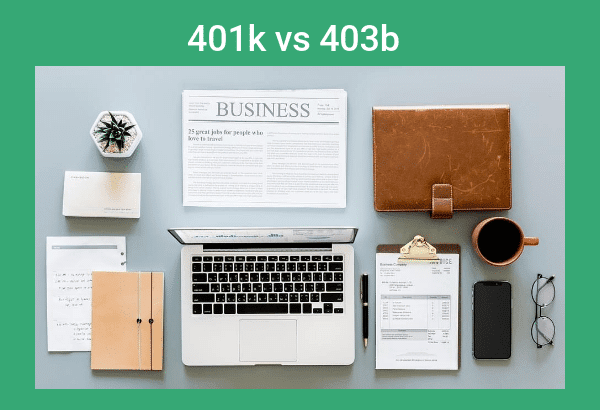As the job market becomes more competitive, companies are trying to stay ahead of one another; this is typically done by offering employees benefits packages. These benefits packages can include healthcare incentives, retirement incentives, or other work-life balance incentives. This blog post serves to discuss employers' retirement incentives, notably retirement savings plans that employers offer. The most notable retirement plans companies offer are 401(k)s or 403(b)s. For those not familiar with 401(k) and 403(b) plans, these plans were named after sections of the tax code, and both are considered to be qualified tax-advantaged retirement plans, meaning that any money deposited into these accounts for the year will reduce your taxable income.
Depending upon where you work, you may have access to one or the other, sometimes even both. You may be wondering what the differences between the two are. Simply put, a 401(k) plan is provided by for-profit companies, while a 403(b) plan is only available to non-profit organizations and government employers. Another difference between the two is the investment options available to the plans. In the past, 403(b) plans were referred to as a tax-sheltered annuity. They received this name because the plan was restricted to model an annuity format. (For those who are not familiar with an annuity, an annuity is a tool used to provide a consumer with an income stream for the rest of their life based on the lump sum of money deposited into the account.) Nowadays, a 403(b) plan's investment options are increasingly starting to resemble a 401(k) plan.
As you begin to look at your retirement plans offered by your employer, you may notice that the investment options available to you are limited. Most employer plans give their employees access to certain funds. Therefore, the funds you have in your Traditional IRA or Roth IRA (discussed in last week’s blog post) may not be available to you in your 401(k) or 403(b) plan provided by your employer. Not having access to the same investment options in your individual retirement accounts does not mean that you cannot achieve the same success in your employer retirement plan. It just means you have to be more cognizant of the investment options you are choosing.
As with most retirement plans, the amount of money that one is allowed to contribute to these accounts is limited. For a 401(k) plan and a 403(b) plan, as of 2020, if you are under age 50, you can deposit $19,500 into the account for the year. If you're over age 50, you can deposit $6,500 in addition to the $19,500. If you are one of those lucky enough to have access to both plans, you can contribute $19,500 as a total between the two plans if you are under age 50 ($26,000 if you are over age 50). If you noted that I mentioned the limits "as of 2020," this is because the limits can change year by year depending on what Congress decides. Therefore, if you are not working with a Financial Advisor, it is essential to keep this in mind as you decide how much you will contribute to an employer retirement account.
Even though these are qualified tax-advantaged plans, some employer retirement plans will provide the option for you to contribute on a Roth / After-tax basis. Keep in mind if you were to contribute on a Roth / After-tax basis, then your contributions will not lower your income for the year. If you contribute on a pre-tax basis and Roth/After-tax basis, and you’re under 50, then you can only contribute $19,500 between the two. If you’re over 50, you can only contribute $26,000 between the two.
When making decisions around your employer retirement plan, it can be complicated and confusing. As we are nearing the end of the year, open enrollment is approaching for most companies. If you feel overwhelmed with how much you should contribute or what investment options you should select during open enrollment, please feel free to reach out to us! We'll be happy to help in any way possible.
Sincerely,
Travis Tracy, CFP®, EA




